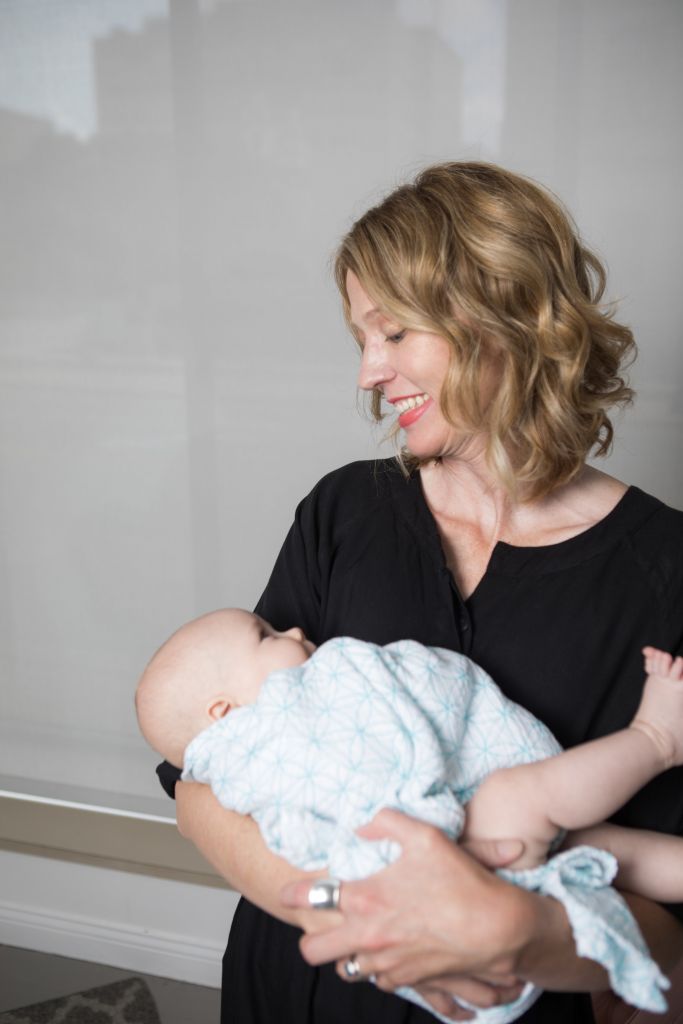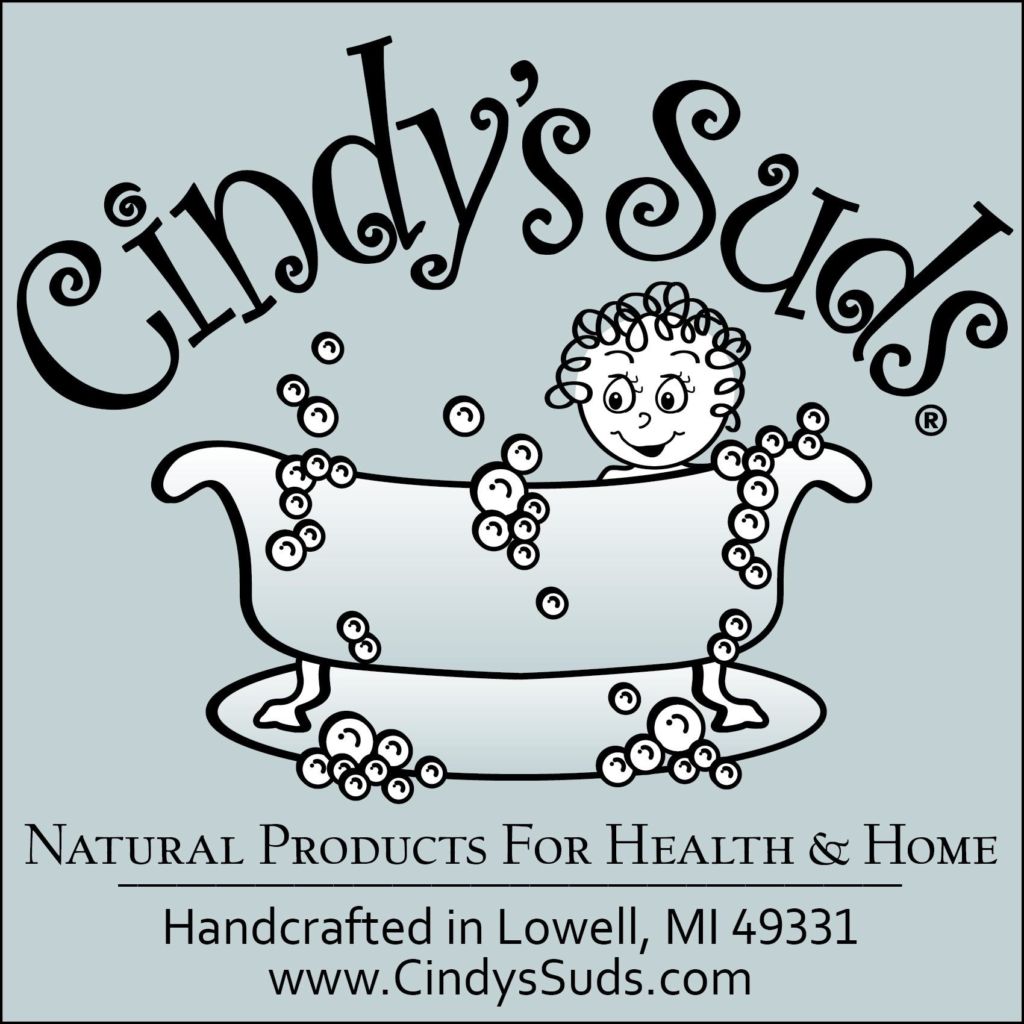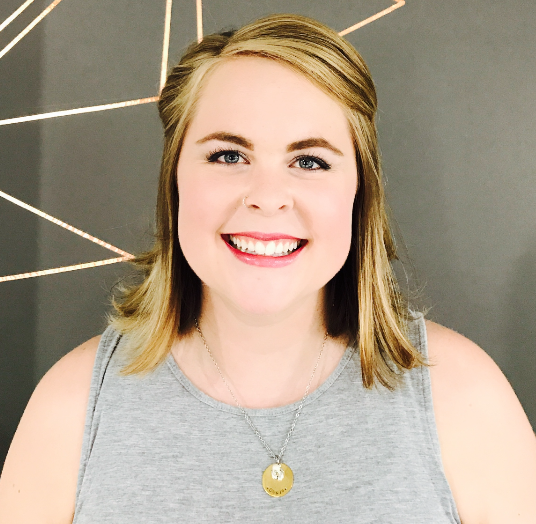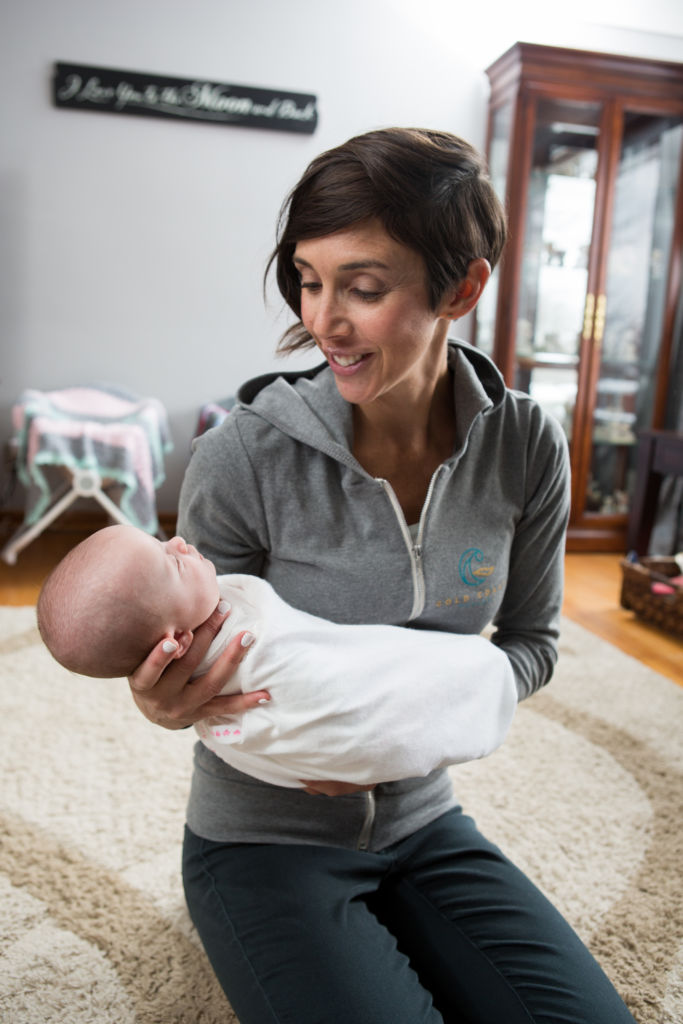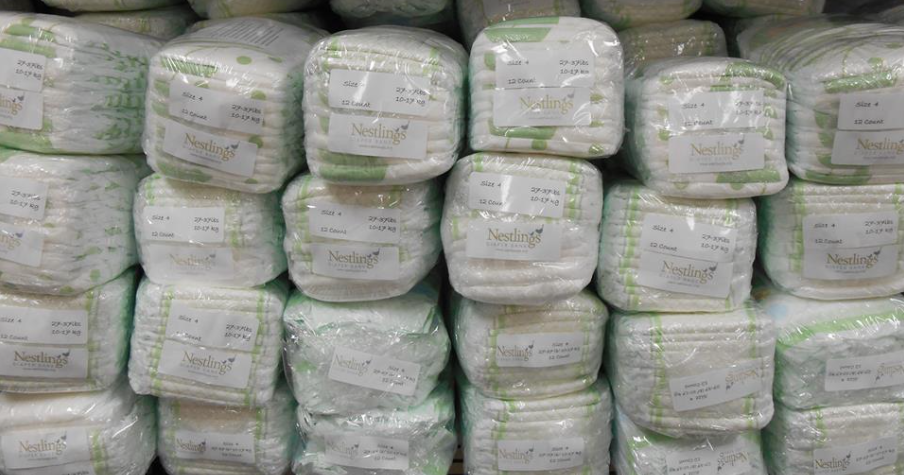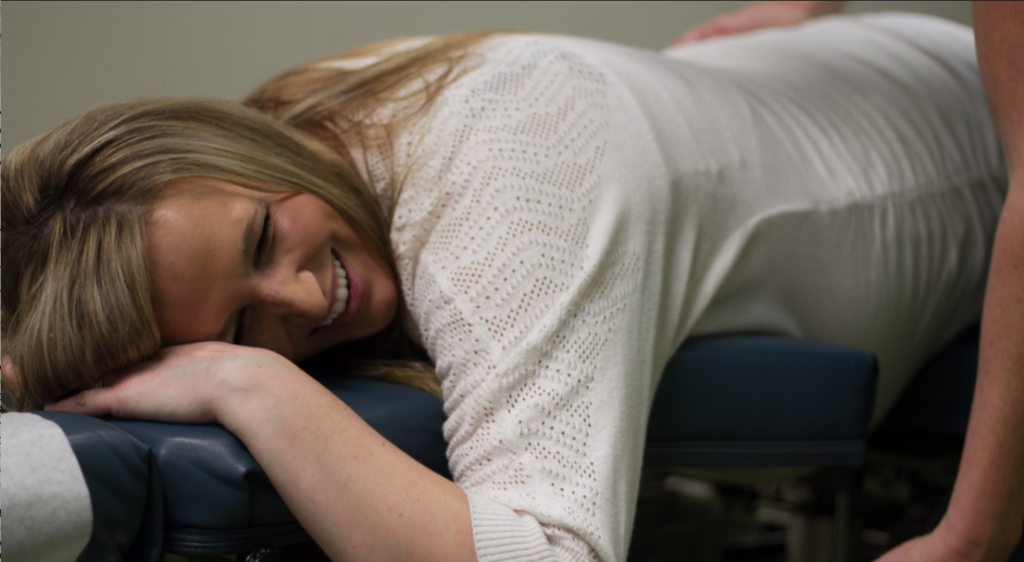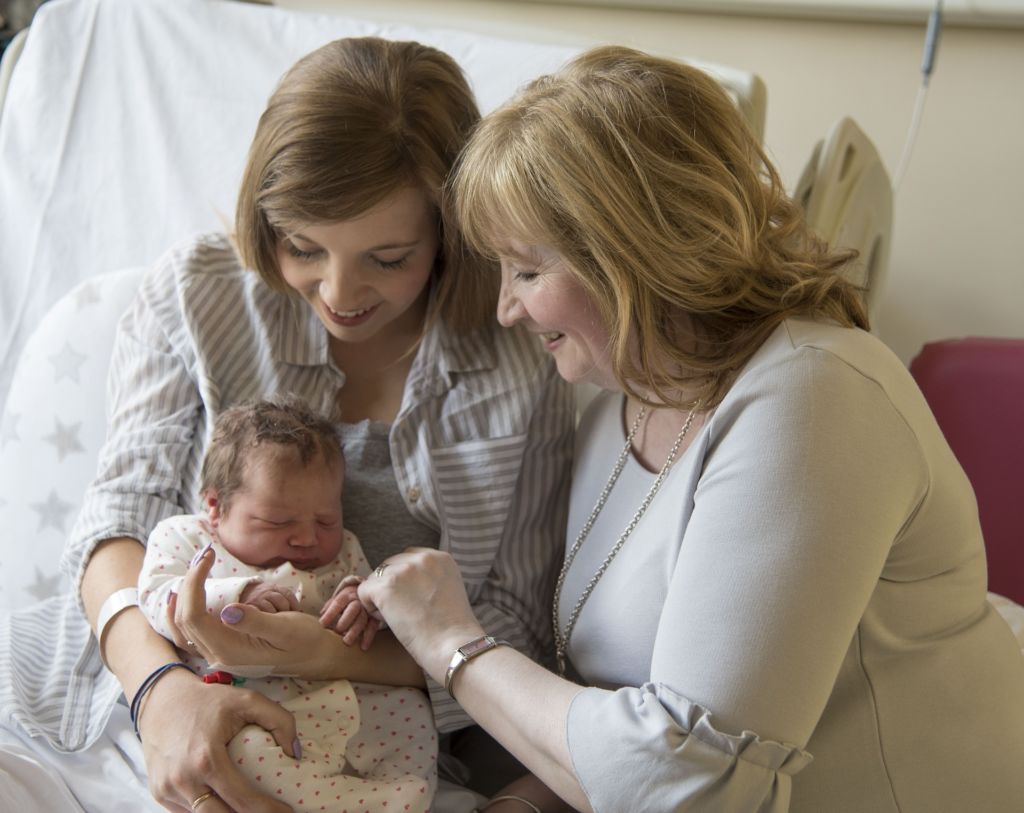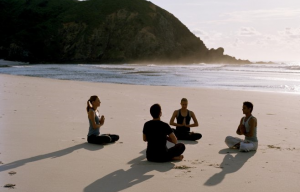Podcast Episode #9: How to Handle a Six-Week NICU Stay
On this episode of Ask the Doulas, Tricia talks about her experience with her twins staying in the NICU for six weeks. You can also listen to this podcast on iTunes.
Alyssa: Hi, welcome to another episode of Ask the Doulas with Gold Coast Doulas. I am Alyssa, co-owner and postpartum doula, and today we’re talking to Tricia.
Tricia: Hi.
Alyssa: She is a post-partum and birth doula with us and also our multiples expert that teaches the multiples class. Tell us about your multiples.
Tricia: They are two. I have identical twin girls, Keira and Rosalind. They also have a big brother named Gideon. He just turned four.
Alyssa: Okay, so for a while there, you had three under three?
Tricia: I had three under two.
Alyssa: Three under two!
Tricia: They are 23 months apart, so yeah.
Alyssa: Wow, you are wonder woman. So when the girls were born, they had a significant NICU stay?
Tricia: They did.
Alyssa: And I know parents get really nervous about NICU, and Kristen had talked about how her daughter had a three-week stay. How long were your daughters in the NICU?
Tricia: They were in just over six weeks. Keira was in for 41 days, and Rosalind was in for 45.
Alyssa: Okay. So tell us a little bit about the birth story and how they ended up in NICU and what you and your husband felt.
Tricia: My girls shared a placenta, so we had issues for a little while. They were monitoring really closely. One of their placentas was velamentous cord insertion, so it was palm-shaped, and it was attached to both the placenta and my cervix. Keira started detaching off of the placenta.
Alyssa: So there were two placentas?
Tricia: No. One together; they shared. One had two cords. So they had separate sacks. There are three different types of twins. We were the second-safest, I guess is the best way. MoMo, they share a sack and they share everything.
Alyssa: Okay. One sack, one placenta?
Tricia: Yeah, which runs risks because umbilical cords can twist around each other. We had the safe kind of identical – well, safer. Two sacks, but they shared one placenta. So yes, they started to do a twin-to-twin blood transfusion back and forth, and so the placenta just kind of died, or was starting to. So Keira came out pale and not breathing at 32 weeks, and sister came out 30 seconds later. We had an emergency C-section because Keira was originally breech, so she was going to be a C-section regardless. She was Baby A. But it became more emergent when they realized that she was having issues with her placenta cord or her umbilical cord. So they both were intubated within seconds. Their scores were super low. I want to say Keira’s was a one and Rosalind’s might have been a two or a three. So super low at birth. I think the scariest part was we had our son first, so we knew that they come out crying and happy. And the doctors, when we came into our C-section, were talking about vacations, and by the end of it, the entire room of 30 people was, like, silent. So yeah, my husband really had a hard time with that. We both started crying. Both girls were fine. Keira was pretty much whisked straight down to NICU. Rosalind was a little bit more stable, so they were able to have her lay next to me. I have a photo of her little finger in my finger as they stitched me up, and her just kind of sitting there. But then she was sent back down with sister. Thankfully, I had a postpartum doula sitting there. My husband left for about an hour. It was very traumatic for him to have both of his girls and me and the whole – so he went and had his time. I really still to this day, two years later, have no idea what he did. I know he went through a drive through, and I know he sat in his car and cried, but I had my support for me, so we both were able to be where we needed, and my support was amazing. Having that doula there was – I honestly could not imagine being in a room with no babies; no husband, because he needed his time, and yeah. She was phenomenal. And we had a NICU nurse come upstairs a couple hours; it was a good couple hours and brought pictures and had weights. And both girls at that point were stable. Both were intubated, great. The NICU doctor was a little concerned. Keira’s hemoglobin was at an 8, and Rosalind’s was at an 18. They think it happened within the first, like those last couple hours when the umbilical cord started being funky and the placenta, because it can go so quickly. And they really don’t think it had to have been a couple hours because I was having contractions for a good 48 hours before the girls were born. They just weren’t consistent. But we had steroid shots prior. They weren’t going to start labor, because at that point they didn’t think that it was – when it was going to happen, it was going to happen. But she felt that Keira would do a lot better if she had a blood transfusion because her hemoglobin was so low for even an adult, let alone a baby. But blood transfusions for babies are really little. You think “blood transfusion;” you think these huge – it’s like a little syringe amount of blood. It’s super little because they were so little.
Alyssa: So did they explain that to you? Because I think if somebody told me, hey, your newborn baby needs a blood transfusion, I would just break down. So they said this is literally what it looks like? So they just pump new blood into their vein?
Tricia: Yeah, they did it through her head because the head veins are so nice and with babies, they still move. They’re little babies. She might be three pounds, but they’re tough little things at three pounds. And so they go through the head because it’s a really good opening; they don’t have to worry about trying to do it more than once. And so it’s a really little amount; it’s a little syringe. Thankfully, yeah, they did explain some of that. By that time I was pumping. I was able to thankfully talk to a NICU nurse prior to going into NICU, so I knew that without the girls, if I wanted my milk supply to go in, I needed to have a pump within three hours. I had to kind of fight for my pump a little bit, but I was able to get a pump in those first three hours because I was determined to have that. I was able to see the girls for the first time a little after midnight, and they were born at 6:52 and 6:53. So it took about four hours for me to get down there. I couldn’t hold them or anything like that. They were little things. But at that point, Keira had her blood transfusion and all of that. They were, yes, very fragile little things.
Alyssa: What goes through your mind?
Tricia: At that point, I think I was just so happy to see them okay that I really – I don’t think that there was much else because I had experienced her coming out not breathing and her being whisked away and knowing that I almost didn’t go in that day. They were going to send me home. When I went into the hospital, I came in with contractions every eight minutes apart. I was a centimeter and a half dilated. They thought they’d give me some fluids and send me back home at 1:00. I went to the hospital alone; drove a friend’s car; was in my nephew’s preschool class that morning. Like, nobody had a clue that these girlies were coming, and then 3:30, doctor comes in and, “You’re dilated to a three. We can’t send you home. You’re an automatic C-section. I can’t send you home. Contractions haven’t stopped. You probably should call your husband.” Husband’s going, “Do I have time to go get my oil changed?” I’m like, “No, honey, I don’t think you do. They’re acting like we don’t have time for this.”
Alyssa: Maybe that’s what he did for those two hours. “I got a burger and my oil changed and cried.”
Tricia: Right! So the first few days, yeah, were really just – I overdid it a little bit because the anesthesia made me feel – it takes 24 hours for anesthesia from a spinal to fully leave your system, so I could walk, I could pee, I could do all that. I felt invincible, but you’re not invincible. It’s the pain meds talking to you that you’re invincible. So the first three days I pretty much – we did not really have any visitors at the hospital when I was in there, which is way different than with my son.
Alyssa: And was that by choice? You didn’t want anybody to come?
Tricia: Yeah, I really didn’t. They can’t go into NICU, and I wanted to be down with the babies. I was up in my room to get meds, to eat, and to sleep. And everything else I did next to the girls. Rosalind was in – she had bilirubin lights for a couple days. They had bradys throughout the six weeks, which is when they periodically stop breathing. It’s a really common preemie problem is the best way I know how to put it. It’s just that in the uterus, if they don’t breathe a second, it’s fine. They’ve got all the stuff, so it’s them learning how to breathe. They still have to learn how to breathe. Rosalind had a little bit more issues with her lungs, so they were given surfactant to coat their lungs to try to help them breathe at delivery and to help their lungs grow and mature. Keira’s lungs took it; Rosalind’s did not. It all still, 24 hours later, it was pretty much right on the surface of her lungs kind of a concept, so she had a lot more issues breathing. She was off and on different various c-pap and nose canula and breathing. They both had caffeine at some point, and I remember a NICU nurse telling me to drink more caffeine because it was better that they got it through my milk vs. the little –
Alyssa: So what is the caffeine for?
Tricia: It’s to help with them remembering that breathing on their own, to help them be a little bit more alert. That was my understanding, anyway. It’s a lot of trying to get them to remember to breathe on their own because if they sleep and they forget to breathe, there’s a lot of monitors.
Alyssa: Interesting. I would have never thought caffeine.
Tricia: And once again, it’s a really tiny amount.
Alyssa: Oh, of course. “Let’s give them a cup of coffee in a syringe.”
Tricia: Basically! The medical aspect of – I never thought I would know all this medical stuff, and then you have twins who spend six weeks. Food’s in milliliters, and everything’s ounces, and those ounces matter. Like, you don’t think about it when you’ve got a full-term baby and they come home seven pounds and four ounces. But then you have a 3.4 and a 3.7 and they go down to the three pounds, and it’s like, you gained an ounce today! That ounce is huge! I exclusively pumped. We attempted latching, but they never really got the hang of it. Even with bottles, they were still like – part of the reason we were in NICU so long is because it took them a while to understand that oh, I have to suck, swallow, breathe. I have to eat. After about two weeks in for the most part they were feeder/growers. The first couple weeks were a little bit of one step forward, two steps back. Because Keira was under 3.5, she had to do a routine eye exam, which is because there’s a disease that they can get in their eyes if they’re on oxygen for too long. Their birth weight’s low because most of these babies who are that little are on oxygen for a while. And they also have to do a head ultrasound because there’s risks of breathing. And with her routine head ultrasound, they found a pseudocyst in the left ventricle of her brain, which looked more like a blood clot. It didn’t seem to affect function; didn’t seem to be anything too different. They ended up doing a head ultrasound of Rosalind because they’re identical, so they were curious if it was a thing. Both of their left ventricles are bigger than normal, I guess. I don’t really know what that means. Everybody’s brains look funny. The doctor made it out like, “They’re bigger than what the normal brain is, but if we were to do a head ultrasound on you, your brain would look funny too.” Like, there’s a very vague, “this is how your brain is supposed to look” concept. And so they both had bigger left ventricles, but sister did not have the pseudocyst. So they think the pseudocyst was part of delivery. Either that blood transfusion aspect where sister was getting her blood and she was giving it, or just with the placenta and delivery being a little bit more traumatic on her little body.
Alyssa: So is that something that goes away? You just watch it, or did you have to –
Tricia: It did. It did. They weren’t 100% sure. It’s not something that we studied much here. The doctor had to get a study from Sweden because they have more availabilities to that. If it did not go away, the doctor had said that it really wasn’t going to affect any function. It doesn’t affect anything. Hers did dissipate. That might be the wrong word, but it did disappear about eight, nine months in. She had an MRI. She’s had a couple of them, and so we are officially – neuro is done. She’s clear. She had a little bit of – she had to do some PT for a little bit for her right side because of just making sure everything crossed, but otherwise you would not know that she had that at all.
Alyssa: So you said after a couple of weeks, they became feeders/growers. Is that like a common term for NICU parents? Like, they’re feeding well and growing, and that’s their main goal is just to keep them feeding and growing?
Tricia: It is. In the NICU, you start in the back. The littler you are, you start in the back. That tends to be –
Alyssa: So you kind of graduate towards the front?
Tricia: You graduate towards the door. So when we got there, we were in this little corner, and it was both girls’ beds, and you’re in the back. And you can tell that you take a little bit more. A little bit more nurses, a little bit more machines. You’re back there. Like I said, we were 32-weekers, so we were kind of surrounded. There was some 26-weekers. There were some 24-weekers. So when you’re toward the back, it’s generally – in this NICU, you’re a little bit more of a – “We need to monitor you. You’re not as stable.”
Alyssa: A little higher risk.
Tricia: You’re a little bit higher risk, yeah, which it’s not that you’re not stable. It’s just that nurses need to be checking in a little bit more and a lot of times you’re in the kangaroo pods, which are the big isolettes, and you need the darker lights and you need to be a little bit more quiet. So you get put back there so that you can really sleep and grow, and it’s more womb-like towards the back, as womb-like as you can be in a room filled with monitors. They give these blankets. Each baby gets to go home with this big, oversized blanket that they put over top of the isolettes so that it can stay dark. My girls still sleep with them at night; they’re their little NICU blankies. Then as they get a little bit bigger, because newer babies come in that are the younger and need the quiet and the more monitoring, you get moved to the front. And so my girls had about two and a half, three weeks and then got moved to right next to a window and right across the nurse’s station. So yeah, then they get put into little basinets because they start being able to control their body temperature, and they are starting to breathe better, and they don’t need the c-pap. They just have the nose canula which is a huge – the nose canula looks really scary. It’s actually a lot better than to be intubated, but it looks a lot scarier. So it’s got all these bigger monitors and whereas with the nose canula it’s just these little things of oxygen and it can hide behind the bed. So yes, as they get bigger, yes, they get closer to the door.
Alyssa: Okay. So for a good three, four weeks they were feeders/growers?
Tricia: They were.
Alyssa: When do they graduate? At what point do they say, okay, they’re good to go?
Tricia: They have to be breathing on their own. They need to not have bradys within – I want to say it’s 48 or 72 hours. It’s a decent amount of time. It might be 72 because that’s part of the reason that Rosalind ended up staying longer than Keira did is that she had a couple episodes and they can’t send – they have to make sure that she can go home not breathing. Now, there are babies that are sent home with breathing machines and with monitors and whatnot depending on where you are and what your baby needs. Every morning, the doctors come and they give you updates on how they fed that day and what they’re thinking about food-wise; what they’re going to add; what they’re going to change; positives that baby did. And then they also, if you’ve got questions, doctors will sit and answer your questions. They go through rounds. It’s the way that they can do the nurses from the morning to the night, keep everybody up to date per baby. So they also have to pass a car seat test. Mom and Dad have to sit and watch three different videos. There’s a car seat safety test. There’s a CPR class. There’s another one. I cannot remember off the top of my head.
Alyssa: But they want to make sure you’re going home prepared? As prepared as you can be.
Tricia: Yep, yep. They come home, and they’re really – the nurses are all trained. They’re trained for feeding; they’re trained for various different – there was one that was a lactation consultant, so she sat and worked a lot on trying to get the girls to latch and have to figure out some of that. They’re really knowledgeable. They have also social workers upstairs that come down weekly and are like, “What can we do to help?” My husband and I had a 45-minute drive. Our NICU gave us gas cards weekly to help pay for driving there and back and there and back. Because there is a house that’s like right next to it, but you have to be within an hour. So we were just close enough that really – and we had a toddler at home, so we wouldn’t have been able to really use that much anyway, but it was nice that they were like, “What can we do to help your family make this less—”
Alyssa: A little less stressful.
Tricia: A little less stressful; a little less, yeah. And then usually they do a room-in, so they send you upstairs, and you’re on your own with baby. They’ll come in and do vitals every three hours. It’s basically like you leaving the hospital –
Alyssa: If you would have had a full-term baby? So you get that night, maybe, day –
Tricia: Yep, you get that night.
Alyssa: It’s like, okay, I can do this alone before we go home.
Tricia: Mm-hmm. You go home; babies are off all the monitors. It gets a little bit of normalcy to this. They’ll wheel you down in the wheelchair, and the whole, like, this is what you do. Like, I did not leave from the maternity floor when I was sent home because I could not leave from that floor empty-handed. I was like, I’m leaving from the NICU floor. You can put everything back down to the NICU floor, I’m just leaving the hospital and then coming back. If I leave this floor, it’s –
Alyssa: Something in your brain just won’t let you –
Tricia: Something in my brain. I was leaving my girls. I was leaving my girls together. It was that – I’m not leaving as a postpartum mom. I’m leaving as a mom. And I think that for whatever reason, that made a big difference.
Alyssa: So last question I have is you finally get to take them home. Well, one, and then the other, but you finally have both babies home. How do you deal with the nerves of what if they stop breathing? I mean, every parent has this fear of what if they stop breathing in the night. There’s all these what-ifs, and you have like a hundred more. How do you handle that?
Tricia: I know some parents buy the little Owlet monitor thing. There’s a bunch of different sleeping monitors. My girls came home on a schedule, so we kind of kept their schedule. I will be honest; I was over their crib just kind of watching them breathe for a while. Because you don’t, and you can’t. There’s really not – there was an oversized chair. I pumped in their room a lot, so I could watch them breathe while I pumped. You kind of just eventually get a little bit less – I don’t know if it ever really goes away.
Alyssa: Does it ever go away? I mean, I still check my almost-five-year-old daughter’s breathing at night before I go to bed, so that never really goes away, but you get to a point where you’re like, okay, these girls are healthy; they’re going to be able to sleep through the night, and now I can sleep through the night.
Tricia: Yeah. I mean, I had a post-partum doula that I talked to for a while because I did have a lot of anxiety.
Alyssa: The same one that was with you in the hospital?
Tricia: Yes. Due to just – yeah, I had a lot of anxiety from NICU; a lot of fears. So talking through a lot of it helped too. I think being able to talk it out and being, you know, they’re okay. They’re here now. My big thing is they’re here; they’re healthy. They’re happy. They’re fierce little things. But they’ve had a really long day. They’ve had a long rough road. Writing it out helped too. They have a book they both will get that is their full NICU journey.
Alyssa: So you would write every day?
Tricia: Pretty close. Regularly. I wouldn’t say every day, but pretty close. It has their updates; it has their weights. It talks about when Keira came home. Actually, that was probably the hardest day of NICU was taking just one of them home because it felt so foreign to me. I needed – I was supposed to have two. There’s two of you. And they’d never been apart. At least when I left, they were still together. It was really weird to take just her home. It was a very bittersweet day. Our family’s all like, “But you get to get ready for one.” I’m like, yeah, for two days, and now I get to take this infant in and out of the hospital. It’s not as great as you think it is.” I mean, it had to happen. It was fine; it was great; it was four days, and they left her bed and they made it as comfortable as they could. So their book talks about that a little bit. And I was a little bit more open with them in their book than I was with, like, Facebook-updating my family.
Alyssa: Oh, I’m sure. It will be a beautiful thing for them to read when they get older, I’m sure.
Tricia: Mm-hmm, for them to see how far they’ve come.
Alyssa: Yeah, and for you to remember because I feel like, you know, even a year ago, you forget little stories, and I’m a huge proponent of writing things down especially during the newborn stage because you are in this fog, and if you don’t write it down, you probably will never remember. And kids love to hear those stories about themselves, so I think that’s a beautiful way to track that.
Tricia: Yes.
Alyssa: Well, thank you so much. I feel like we have a million different multiples topics we could talk about, like your pumping alone. I think that could be – we will definitely talk about that again.
Tricia: Yes, I could talk for days for that, and all the places I’ve pumped.
Alyssa: We will talk about that for sure. Well, thanks. If you have any questions for Tricia, contact us at info@goldcoastdoulas.com. And you can find us on our website, goldcoastdoulas.com. Thanks for listening in today. We will talk to you soon.
Podcast Episode #9: How to Handle a Six-Week NICU Stay Read More »



